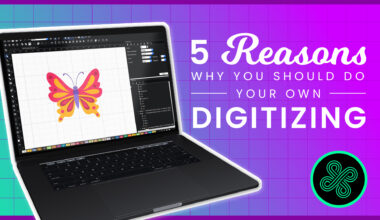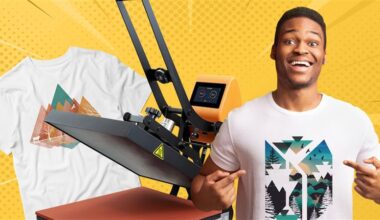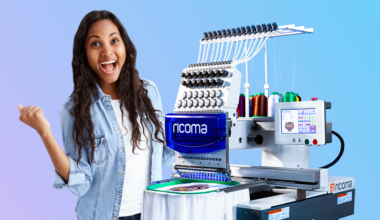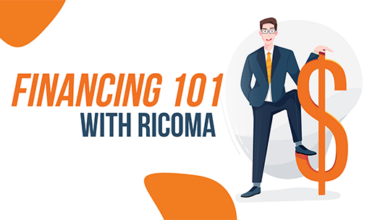In this episode of the Apparel Academy podcast, Henry covers the pros and cons of drop-shipping for your t-shirt business vs. keeping production in-house!
Read on to learn more about which option would be the best route for your custom apparel business.
You can also follow this podcast using the audio version below.
What is drop-shipping?
So, what exactly is drop-shipping and how does it work? Drop-shipping is a process where you are using a third-party fulfillment system that is shipping out the t-shirts to your customers.
You are essentially the middle man between your customers and the fulfillment system.
When you want to get started with drop-shipping, there are a few steps you have to take to get it up and running properly:
- Connect your online store to a fulfillment system on the backend and upload your brand’s designs on a variety of products, such as t-shirts, caps, and even flip-flops!
- Once you add these designs to your store, your customers can purchase this specific design.
- The specifications of the design is then sent to the fulfillment system, who will print, pack, and ship your products to the customer.
You are in charge of the front end of the website and getting the products on the website.
It seems simple enough, which is why a lot of people who start in the custom apparel business and don’t have a lot of capital, will go this route. Now, let’s go over some pros and cons.
Pros
#1: Most drop-shipping services are print-on-demand
As the middleman, you don’t actually have to worry about when you’re going to print the design or where it is getting shipped to.
One of the great things about drop-shipping is that once an order is placed, the fulfillment system will automatically start processing the order for production and shipping. You don’t have to worry about producing the item that was ordered or getting it shipped to the customer.
The fulfillment system does it for you, automatically.
They even add your brand logo to the packaging, so the customer thinks you were the one fulfilling the order, when in reality, it was done through a third party!
#2: You don’t have to invest in inventory
Not having to invest in inventory allows you to free up some of that cash flow. You also don’t have to keep a lot of items in stock, in terms of blank apparel.
All you have to do is take those pieces of blank apparel that are available through the fulfillment system and add it to your website, with your design on it.
The fulfillment system has the inventory in stock and takes care of fulfilling the orders for you.
You don’t have to carry any products, so there is no risk for holding more products than you can sell. You also don’t have to keep any items on hand that may not be popular at the moment, which takes up space.
#3: You don’t have to invest any money upfront, so no risk
You don’t have to spend any money on inventory, equipment, or materials to print or embroider on the item. Also, you only pay the fulfillment system a cut of the profit when an order is placed and fulfilled.
Consider this example:
- Retail price you charge the customer for a t-shirt is $20.
- The fulfillment cost is $8.
- You make a profit of $12!
You didn’t have to pay anything upfront; all you had to worry about was marketing your business to get the orders, and then profit from the whole process.
Get started today by speaking to one of our product specialists about our machines!
Cons
#1: You have no quality control.
When you let someone else prepare and design the product for you, you have no control over how the product is going to look when it gets shipped out.
Before it gets shipped out, you are not able to make sure that the product looks good and is up to your brand’s standards.
Pro tip: Do your research before and make sure that the fulfillment partner you choose is the right fit, and has the right expertise and knowledge, to ensure your clients get a quality product.
In relation to quality, you have no control over the turnaround time. You aren’t able to guarantee how long it will take for the product to get to your customers.
This might not be the best route for you if you want to guarantee quality and production time to your customer. You relinquish that control once you use a fulfillment partner.
#2: You never receive the full profit potential.
Since the fulfillment system is fulfilling and producing all orders for you, they need to get a cut of the profit for their work. The fulfillment fee is most likely a large chunk of that overall order’s margin.
An example is:
- A t-shirt of yours may retail for about $20-25.
- Payout to that fulfillment partner could be about $12-15.
- Profit: you will be left with $8-10.
Rather than making $20 off the retail price of the shirt, you lose a percentage of your profit potential by having a third party fulfill the orders for you.
If you are trying to increase your profit potential, then this might not be the best route for your business.
Want to learn more about pricing your embroidery work? Make sure to check out this webinar where I explain how to maximize your profit!
Keeping production in-house
Doing the whole process yourself entails purchasing the appropriate equipment/materials, printing, packing, and shipping the products yourself. You will be in complete control of fulfilling the orders, creating high quality designs, and building a strong, genuine relationship with your customers.
This process is pretty self-explanatory, so let’s jump right into the pros and cons of doing the whole decorating process yourself!
Pros
#1: You get to keep all of the profit of your orders.
Since there is no one else in the mix fulfilling orders for you, there’s no one to give a cut to…except yourself! You purchased the equipment and materials, created the design, printed it, and packed and shipped it to your customer.
All profits go to you.
Of course, you have to consider material and equipment costs, but after that, you can keep the money for yourself. After you pay off your equipment, then your profits will increase even more.
This gives you the ability to expand your business and increase profit potential exponentially. Doing it in-house gives you an unlimited profit potential.
#2: You have complete control over the quality of the products.
With drop-shipping, you depend on the fulfillment system to produce a product worthy of the cost and brand that you have established. There are external factors to consider when using a third-party.
By doing it yourself, you can produce the designs the way you want and be certain that what is being shipped out has been inspected, packaged nicely, and sent on time.
Having quality control is important for establishing your brand image, so you can shape and craft your customers’ experience.
Let’s say the fulfillment system printed a design incorrectly or shipped it late; that reflects poorly on your brand because it has your name on it.
No one knows that there’s someone on the backend fulfilling these orders, so it looks like you are the one who made the mistake.
So, if something goes wrong, it’s your brand that gets called out for it- not the fulfillment system. Having control eliminates this risk.
Cons
#1: Make full profit off products, but pay for it in other ways…
Having your own t-shirt printing business means that you need to invest a lot more money than you typically would if you were drop-shipping your orders.
For example, you need to:
- Purchase the appropriate equipment (which can be pricey).
- Have a steady flow of inventory to ensure timely orders.
- Be aware of the shipping time.
You’re putting down a lot of money, in the hopes that you will be able to at least breakeven and make back the money you spent.
#2: Need to be pretty knowledgeable in how to design and print these products.
While anyone can start a t-shirt business, it’s those who invest the time in learning the craft and doing it well day in and day out, who get the best return on investment.
You have to be knowledgeable on the actual fulfillment process, i.e.:
- Printing the design
- Embroidering on the garment
- Shipping it
- Etc.
Some machines, such as a DTG, have an easier setup time and learning curve to overcome, while an embroidery machine may take longer to learn what produces the best results.
You have to decide if it’s worth investing the time in learning the craft so you can benefit from the profit potential down the road.
The more you know your machine and the different decorating methods, the faster your production and turnaround time will be, thus increasing profit potential.
Bottom Line
Both drop-shipping and running a custom apparel business yourself has its pros and cons. At the end of the day, you have to consider what is best for you and your business.
Whether it’s doing drop-shipping and having more time to market your business or doing the work yourself, it’s up to you!
We want to hear from you now! Which method do you use for getting your products in the hands of your customers? Leave a comment below or let us know in our Facebook group, Embroidery & Printing Business Help.
Are you curious how Ricoma can help your custom apparel business?
Schedule a call for a Quick 30 minutes “Embroidery Talk” with our specialists to see if you’re really ready to start or expand your business. Our specialists can help you…
- Find helpful resources to kick start your embroidery education
- Answer any questions regarding pricing your items for profit and sourcing materials
- Help you compare and contrast different machine types and branch in the industry
- Help you determine which machine would suit your business based on your current and future goals






